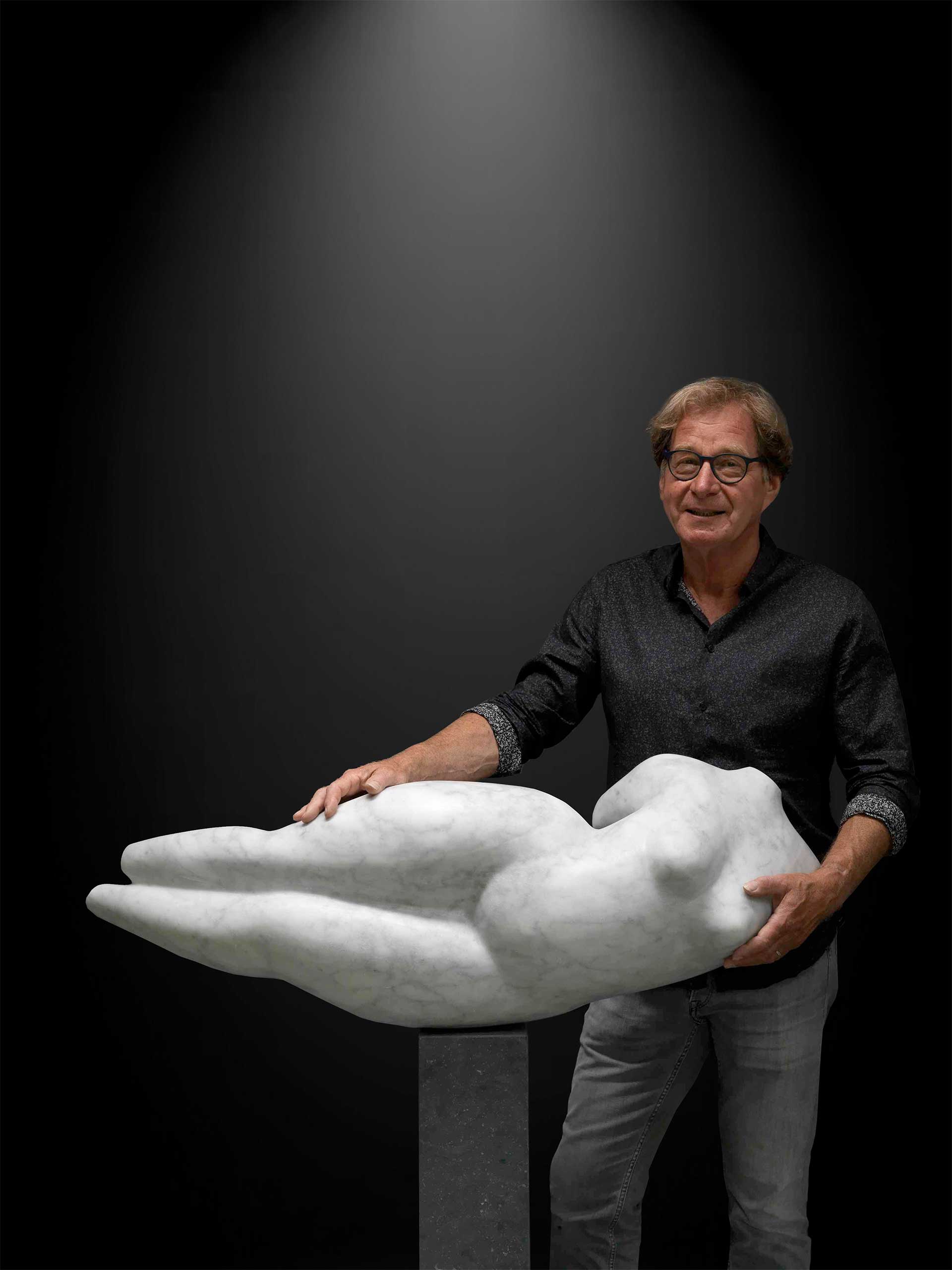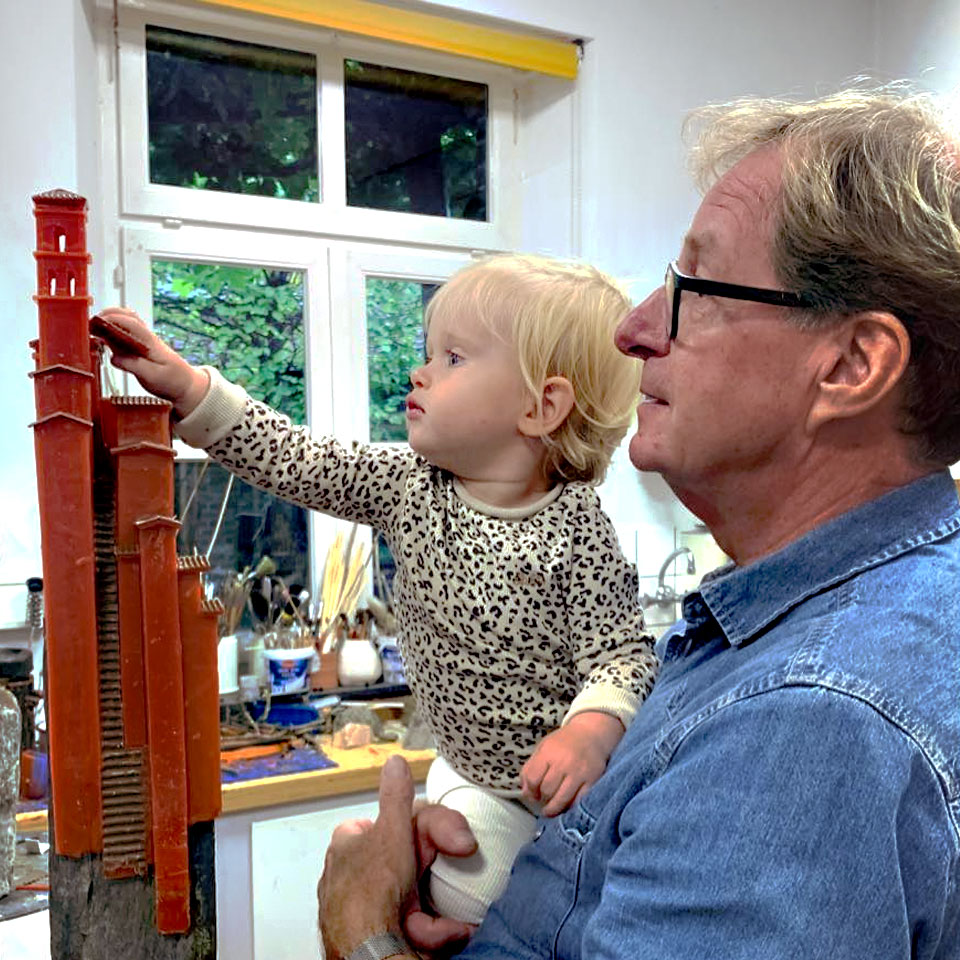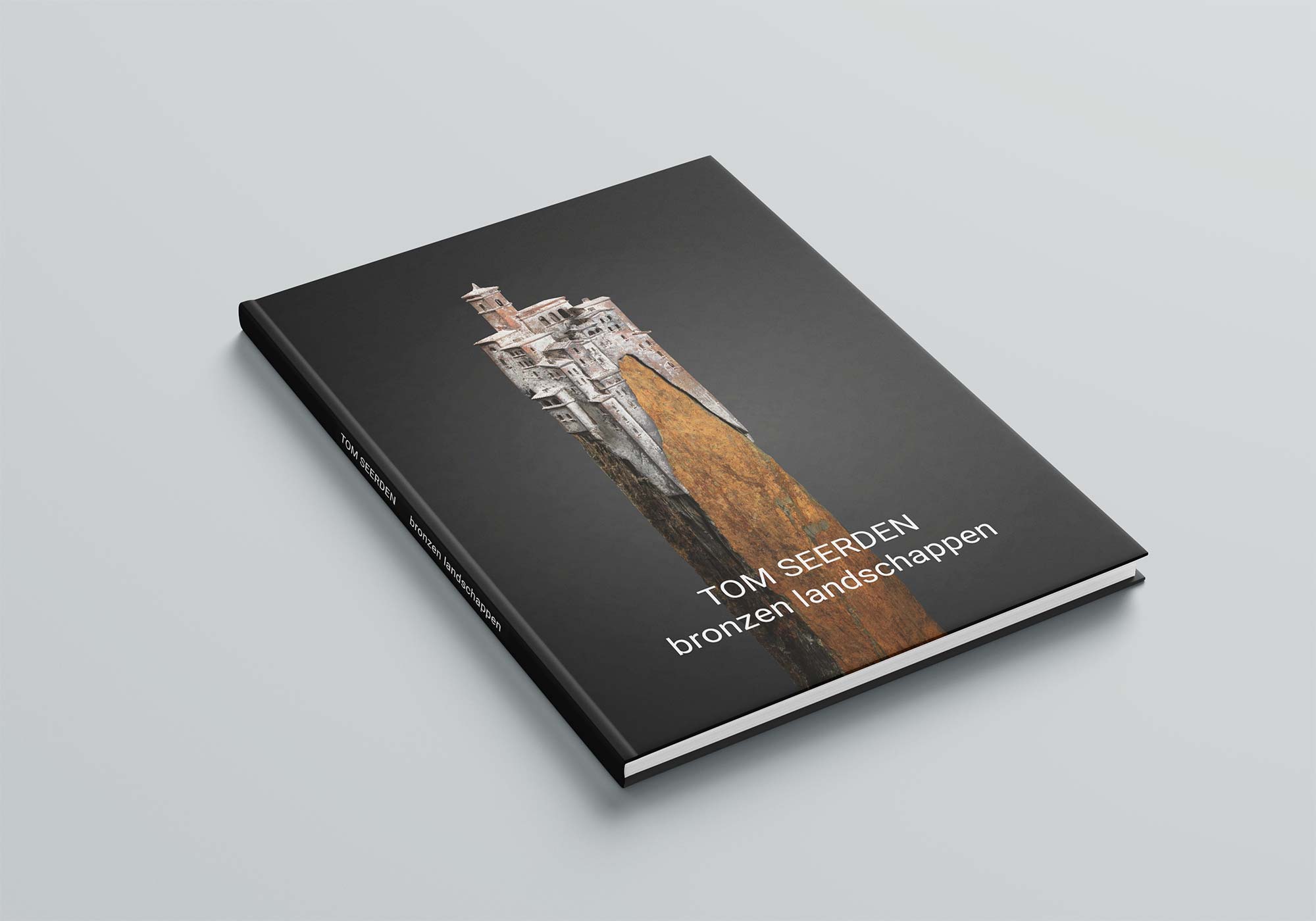About Tom Seerden
Tom was born in 1957 in Panheel, the Netherlands. He studied at the teacher training programme in Nijmegen and then at the Academy of Visual Arts in Arnhem. Holidays, but especially a study trip at the Academy to Florence and Siena, made him realise how important art, architecture and Italy are to him. That is where his great passion and inspiration lies. And that has never changed, because still, living and working in his studio in Kessel, he spends a lot of time in Italy. Especially in the beautiful, multifaceted Abruzzo.
It is not easy to say something about your own work. Why is that? Perhaps because you don’t think of it, but because it arises in the process.
What is important in my work? These are the basics of sculpture: mass, space and material and, for me, tension and movement. In addition, it must also have something to tell. My goal is not to make a ‘beautiful’ sculpture, but a sculpture with eloquence.
In recent years, he has focused on making bronze landscapes on weathered monoliths and old beams. These works are inspired by Italian villages, landscapes, ruins and architecture.
Perhaps the strength in Tom’s work lies in the shared passion and recognition. He encourages the viewer to make his own interpretation. Tom has been exhibiting his sculptures in galleries and fairs both domestically and abroad for years.
Concise CV
1957: Born in Panheel
1976 – 1982: Teacher training Tehatex Nijmegen
1982 – 1984: Academy of Visual Arts Arnhem
1984 – present: Working as a visual artist

To work
There is nothing more delightful than walking into your studio in the morning, putting on some music and figuring out what am I going to do today: finish the sculpture, pick a monolith from the stock and see what am I going to make on it, or finish new casting, grind it and make it fit on the stone. Being an artist seems like a lonely existence, yet every day is different. My contact with the bronze caster, stone dealers, stonemasons and gallery owners is also valuable to me. Working with modelling wax is always a challenge with every sculpture, a puzzle that you work on for a while, intensively, and when it is solved properly, it gives you a lot of satisfaction or even a kick when you are satisfied with the result.
After that, the wax model goes to the bronze caster to be cast. He now knows how I want the sculpture to be cast, with a nice cast skin, and reddish-brown patina. But it’s always exciting to see how the sculpture will emerge from the mould… It is also very satisfying when people become enthusiastic about my work, happy with it, as I often hear back. They recognise themselves in it and give the sculpture a nice spot in their house or garden and later proudly send me a photo of “their” sculpture.
The grandchildren also playfully learn to knead modelling wax, build with scraps of wax, with sticks and other items lying around in my workshop and already build their first (art) pieces with it. Wonderful to see their uninhibited creativity and imagination.

